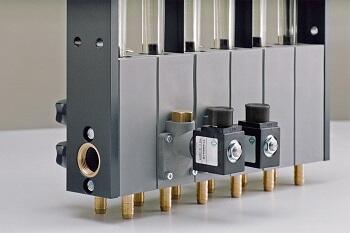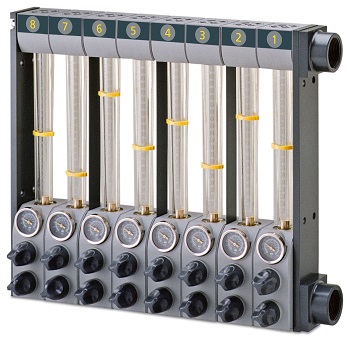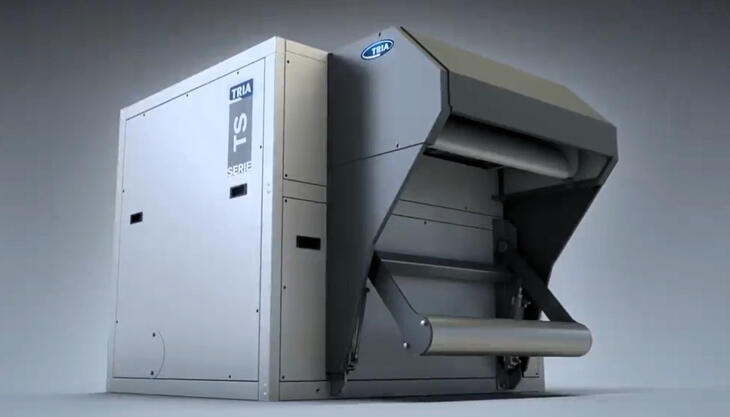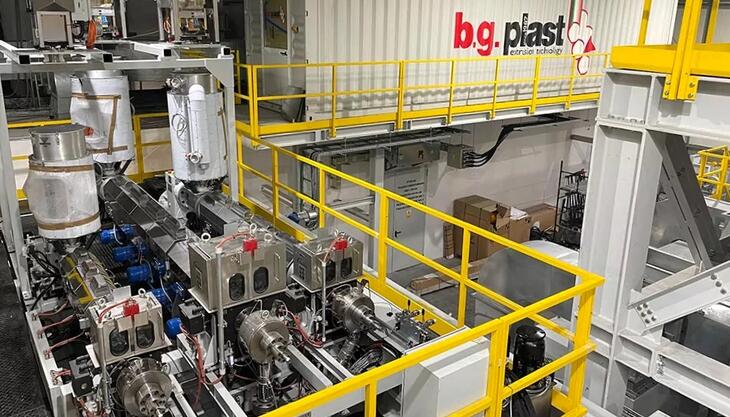Flow controller series 110 and 310: new generation, familiar look

Redeveloping a globally known product with a unique selling point requires a good team and a lot of patience. When the next optimization step is then accomplished, it is the best argument for the work that has been put in. the new water flow controller series 110 and 310 from Wittmann are available.
For more than 40 years, Wittmann flow controllers have been part of the standard equipment for every injection molding machine. The predecessor models 101 and 301 had satisfied users worldwide for decades. They were used for distributing cooling water and cooling molds as well as specific areas inside injection molding machines, such as the feed zone, or the oil cooling system in hydraulic machines. The new 110 and 310 flow controller series are setting new benchmarks to ensure the ongoing technical progress for these products, which seem simple at first glance but prove being sophisticated when taking a closer look.
The tried-and-tested method of pipe cleaning, which can be carried out without removing the pipe through the top part of the housing, has been left unchanged in the 110 and 310 series. It is easy to replace the O-ring by lifting the pipe out of the bracket and then pulling it through the housing. An absolute novelty is the new control valve that allows precise control of the flow rate. The double sealing of the valve disk towards the spindle and the axial movement performed by the valve disk instead of a radial movement are also novelties in the sector of cooling water flow controllers. With these features, Wittmann is setting a new, unprecedented standard! These vital innovations contribute to reduced wear of the O-rings and extend their service life. The O-rings themselves are made of EPDM and offer a high level of chemical and thermal resistance. As before, the sensor tube of the thermometer is placed directly in the return water and thus responds very quickly to temperature fluctuations. To keep the pressure drop inside the flow controller to a minimum, the cross-sections have been designed as large as possible, since a minimal pressure drop constitutes a decisive advantage at low system pressure.
 Additional valves are also offered for the new 110 and 310 series, such as the central shut-off or Z-valve for central blocking of the water supply to several circuits in the event of interruptions in the injection molding cycle. Single shut-off valves or E-valves are available as well, which are used to interrupt the cooling process in individual mold circuits by cutting off the cooling water flow. E-valves are normally used in combination with temperature sensors evaluated by the injection molding machine’s control system. In this way, temperature control of individual mold cooling circuits can be performed by cooling pulses.
Additional valves are also offered for the new 110 and 310 series, such as the central shut-off or Z-valve for central blocking of the water supply to several circuits in the event of interruptions in the injection molding cycle. Single shut-off valves or E-valves are available as well, which are used to interrupt the cooling process in individual mold circuits by cutting off the cooling water flow. E-valves are normally used in combination with temperature sensors evaluated by the injection molding machine’s control system. In this way, temperature control of individual mold cooling circuits can be performed by cooling pulses.
The blow-out valve, which is also available as an option, has an additional compressed air connection and enables - usually in combination with the Z-valve - emptying of the mold circuits by blowing out the cooling water.



















